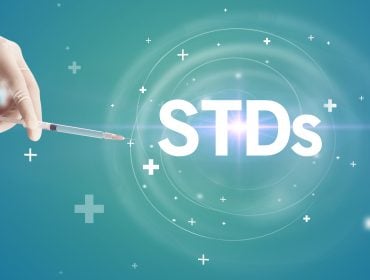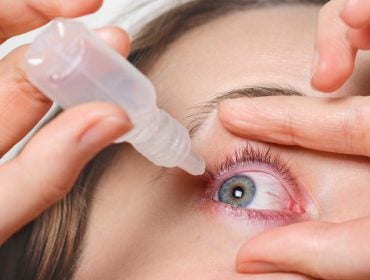Ways Herpes is Transmitted Non-Sexually
Have you ever shared a lip balm with someone? Innocuous as it may seem, such common exchanges can transmit HSV-I without any sexual contact. While HSV-II typically conveys its notoriety through sexual encounters, it can also surreptitiously spread through non-sexual means – a reality that often escapes public awareness.
HSV-I: The Non-Sexual Transmission Modes
Herpes Simplex Virus type I (HSV-I) primarily infects the mouth and lips, leading to what’s better known as cold sores or fever blisters. Although HSV-I is often associated with oral-to-oral contact, its transmission is not exclusively relegated to sexual activities.
In fact, HSV-I can be transferred via sharing personal items such as utensils, toothbrushes, and lip-care products. These modes provide an indirect path for the virus to spread by coming into contact with infected saliva, even when sores are not visibly present. Simple gestures like kissing a child or receiving a peck on the cheek from a relative with an active HSV-I outbreak can innocuously transmit the virus.
Close Personal Contact: A Pathway for HSV-I
Herpes Simplex Virus type I, or HSV-I, can transmit via innocuous and seemingly benign acts of closeness. Sharing lip balm or sipping from the same glass can transmit HSV-I, even when cold sores are not visible.
The virus thrives in the oral mucosa, making saliva a potent vector for HSV-I, even when a person is asymptomatic, heightening its stealthy propagation. Everyday interactions like kisses, shared drinks, or cosmetics can serve as conduits, bypassing intimate relations as a necessary condition for transmission.
Sharing Personal Items: An Underestimated Risk
Herpes Simplex Virus type I (HSV-I) and type II (HSV-II) may initiate transmission through common, non-sexual contact with personal items, in a manner often overlooked. The insidious nature of this indirect transmission lies in the absence of any physical symptoms, enabling a silent spread of the disease.
Items that encounter the human mucosa, such as lip balm or a shared straw, can harbor the virus. HSV-I, in particular, exploits these everyday objects when they come into contact with infected secretions. It is the longevity of these viruses on inanimate surfaces, especially HSV-I, that poses a hidden risk. Accordingly, sharing towels or facecloths with someone experiencing an outbreak can inadvertently facilitate transmission.
Even implements associated with personal grooming or beauty, such as makeup supplies or razors, when shared, could potentially become vectors for the virus. These objects, when contaminated, can carry viral particles and infect new hosts even in the absence of active lesions. Indeed, a culture of casually sharing one’s personal items may invite inadvertent viral transfers. Rigorous personal hygiene and cautious sharing practices are paramount in mitigating these alternative pathways of herpes transmission.
Mother to Newborn: Vertical Transmission Dynamics
Herpes simplex virus transmission from mother to newborn, termed “vertical transmission,” is a critical concern in perinatal medicine.
- Intrauterine Infection: Rare but possible transmission during pregnancy can lead to congenital herpes.
- Peripartum Exposure: The most common time for transmission is during birth through an infected birth canal.
- Postnatal Transmission: Post-birth infection can occur through contact with infected secretions or lesions.
By far, the majority of neonatal herpes cases arise from exposure during delivery. A comprehensive understanding of these transmission dynamics is pivotal for preventing neonatal herpes simplex virus infections.
Breaking HSV-II Stereotypes: Understanding Alternative Spread
Herpes Simplex Virus type 2 (HSV-II) is typically associated with genital infections and sexual transmission, yet it is crucial to acknowledge the non-sexual vectors of its spread. Skin-to-skin contact, even absent of sexual intent or genital involvement, may facilitate HSV-II transmission when it involves contact with an area of the body that is shedding the virus. Common sites for HSV-II transmission without sexual intercourse include areas such as the thigh or buttocks, especially if they are experiencing viral shedding or have active lesions.
In addition to direct contact, HSV-II can potentially be transmitted through contaminated objects, although this is less common. Objects that come into contact with the genital area, such as towels, underwear, or genital grooming equipment, can harbor the virus momentarily, posing a risk if shared immediately. However, HSV-II does not survive long on inanimate surfaces, making this transmission route considerably less likely compared to direct human contact. This understanding reinforces the importance of personal caution with intimate items and underscores the diverse ways that herpes can spread beyond the confines of sexual activity.
From Mother to Child: The Neonatal Risk
Herpes Simplex Virus infections pose substantial risk to neonates if transmitted during childbirth.
- Intrapartum Transmission: If a mother has active genital lesions during delivery, the virus may be passed to the infant.
- Postnatal Transmission: A newborn can become infected through contact with someone who has an active oral or genital herpes lesion.
- In Utero Transmission: Although rare, a mother can transmit the virus to the fetus during pregnancy.
Immediate medical evaluation and treatment are essential for infants born to mothers with herpes. The neonatal herpes infection carries high morbidity and mortality rates if not treated promptly and effectively.
Autoinoculation: Self-Transmitted Infections
Autoinoculation refers to the process wherein an individual transfers a pathogen from one part of their body to another, inadvertently causing infection in a new location. With regard to Herpes Simplex Virus (HSV), this can occur during activities like touching a lesion and then another body part. Patients with active herpes lesions must exercise heightened hygiene practices to prevent self-transmission. This includes diligent handwashing with soap and water regularly.
If a person with oral herpes, also known as HSV-I, touches a cold sore and subsequently touches their genital area, they risk transferring the virus and precipitating genital herpes, a condition typically associated with HSV-II. It is imperative to understand the risk of self-infection and take preventive measures accordingly.
Individuals who have genital herpes, caused by HSV-II, can also self-transmit the virus to other body sites, especially during an active outbreak. This can lead to herpetic whitlow if the fingers are involved or herpes gladiatorum if the infection spreads to areas covered by the clothing during sports or physical contact. While less common, these secondary infections can accentuate the overall burden of disease, necessitating meticulous personal care to minimize the risk of autoinoculation and broader viral dissemination.
Uncovering Uncommon HSV-II Transmission Scenarios
Herpes Simplex Virus Type 2 (HSV-II) is predominantly associated with genital infections, typically spread through sexual contact. However, it is critical to acknowledge that HSV-II can also be transmitted in non-sexual contexts, despite these being relatively rare events.
Vertical transmission from mother to child during childbirth is a significant yet non-sexual route for HSV-II. If the mother has an active outbreak of genital herpes at the time of delivery, the virus may be passed to the neonate, leading to neonatal herpes, a serious condition that requires immediate medical attention.
Thus, understanding that while sexual transmission is the primary method of spreading HSV-II, incidental scenarios such as vertical transmission demonstrate the virus’s capability to disseminate outside of sexual encounters.
Handling Contaminated Surfaces: Reality or Myth?
The concern of HSV transmission via contaminated surfaces is fraught with misconceptions. The herpes simplex virus, in fact, does not thrive outside the human body for prolonged periods. Laboratory studies corroborate this, revealing rapid virus deactivation post-exposure to environmental conditions.
In 2013, research outlined the survival of herpes simplex viruses on inanimate objects, concluding that HSV’s capacity to infect diminishes swiftly once shed from human tissue. Consequently, the likelihood of HSV transmission through contact with contaminated surfaces is dramatically low.
Moreover, the structure of the herpes simplex virus is such that desiccation, temperature shifts, and other environmental factors deteriorate its integrity. This degradation leads to function loss, underscoring the minimal risk of transmission from surfaces encountered in daily life. Precautions against HSV transmission typically focus on direct person-to-person contact, emphasizing the importance of avoiding intimate contact with an infected individual during an outbreak. This also accentuates the role of skin-to-skin transmission as the primary vector for the virus.
While popular belief may suggest otherwise, the risk of herpes transmission via contaminated surfaces is indeed remote. Educating the public on actual transmission vectors remains vital to effectively preventing the spread of HSV.
Hospital Acquired Infections: Healthcare-Related Transmission
Herpes simplex virus (HSV) can, in rare conditions, be transmitted in healthcare settings. This form of transmission, although unusual, is associated with breaches in infection control practices. For instance, if an individual with an active HSV infection undergoes a medical or dental procedure, the virus can potentially be transmitted through contact with contaminated instruments. It is essential for healthcare facilities to rigorously adhere to sterilization protocols to mitigate this risk. Shared items such as endoscopes or surgical equipment, if not properly sanitized, can serve as vectors for the transmission of HSV.
Furthermore, hospital personnel can play a role in transmitting the virus if proper hand hygiene is not observed. It is imperative for healthcare workers to wash their hands diligently and use personal protective equipment when appropriate. Such protocols are designed to protect both patients and staff from cross-contamination of infectious agents.
The implications of healthcare-associated transmission emphasize the necessity for healthcare institutions to enforce stringent infection control measures. Although HSV contamination is less likely to occur on surfaces, it is essential to maintain high standards of hygiene. Hospital-based HSV transmission, while not commonplace, underscores the critical importance of adherence to best practices, including the proper disinfection of medical equipment and the education of healthcare personnel regarding infection prevention strategies.
Protective Measures Against Non-Sexual Herpes Transmission
In the realm of personal conduct, the diligent use of utensils and personal items should be a consistent practice. Avoid sharing items that come into contact with saliva, such as lip balm, drinks, or toothbrushes, to diminish the risk of HSV-1 transmission. The virus thrives on close interpersonal interactions, hence maintaining proper hygiene and establishing boundaries for personal items plays a pivotal role in prevention.
In professional healthcare settings, adherence to rigorous sterilization protocols for medical instruments and unwavering commitment to hand hygiene are fundamental in preventing HSV-2 dissemination. The enforcement of proper infection control strategies guards not only against herpes but also against a plethora of nosocomial infections.
Personal Hygiene: First Line of Defense
Personal hygiene is a critical component in restricting the inadvertent transmission of Herpes Simplex Virus types 1 and 2 (HSV-1 and HSV-2). Consistent hand washing, particularly after contact with infected areas, is essential for prevention. Avoid touching the face following contact with public surfaces. Viral transmission via contaminated hands is notably preventable.
Implementing rigorous personal hygiene routines can protect against virus particles that may linger on objects such as towels, eating utensils, or workout equipment. While HSV-1 is more commonly passed through general interactions, HSV-2 requires closer physical contact, thus indirect transmission is less frequent but still plausible.
The importance of personal cleanliness transcends the bounds of individual well-being and extends to a communal health imperative. Practicing disciplined personal hygiene routines, such as regular hand washing and the avoidance of shared personal items, is foundational in thwarting the dissemination of infectious agents, including herpes simplex viruses. Through diligence and adherence to these preventative measures, we as a society can mitigate the incidental spread and fortify our collective health against opportunistic pathogens.
Safe Handling Practices in Healthcare Settings
Effective infection control hinges on strict adherence to safe handling protocols.
- Hand Hygiene: Thoroughly wash hands with soap and water or use an alcohol-based hand sanitizer before and after patient contact.
- Personal Protective Equipment (PPE): Don appropriate PPE such as gloves, masks, and gowns when performing procedures that may expose you to bodily fluids or infectious agents.
- Instrument Sterilization: Ensure all medical instruments are correctly sterilized to prevent cross-contamination between patients.
- Surface Disinfection: Regularly clean and disinfect all surfaces in the healthcare environment, especially those frequently touched.
- Sharps Management: Handle needles and other sharp instruments with care and dispose of them immediately in designated sharps containers.
- Patient Education: Inform patients about the importance of personal hygiene in preventing the spread of infections.
- Waste Disposal: Follow protocols for the safe and sanitary disposal of contaminated materials and medical waste.
Safe handling practices protect both patients and healthcare workers from infection. Meticulous execution of these practices is essential for maintaining a safe healthcare environment. Learn more about effective ways of managing a herpes outbreak or schedule a time to get tested if you think you might have been exposed to herpes I or herpes II
Medically Reviewed by Julie Hutchinson, MD on March 20, 2024
Secure and Confidential
STD testing services
The fastest results possbile - available in 1 to 2 days

Tagged
Categorized As
Author: STD Check Editorial Team
At STDCheck.com, we go to great lengths to ensure quality content. We’re using our own collection of data. It is not bought or made up for “click-bait” purposes. We don’t entice traffic with cheesy graphics or raunchy headlines. Our information is to promote STD testing, educate people, let go of social stigmas, and bring awareness. We also provide a completely confidential atmosphere through private testing. When we produce an article, it is fact-based. We check it with medical advisors that approve it. Our staff consists of doctors and other medical professionals who peer review the content we make available on STDCheck.com. From all over the world, we have sourced the best and the brightest content developers, including medical professionals, marketing engineers, data scientists, content specialists, and media relations.




